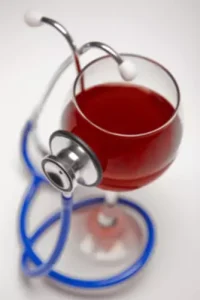
It becomes harder for your eyes to rapidly track moving objects, like cars or pedestrians. Alcohol impairs vision, reaction time, coordination, and judgment, all of which are essential to safe driving. Over a six-year period, Lorkiewicz followed what are the consequences of drinking and driving a group of people 12 to 24 years old who were enrolled in a national study of the effects of alcohol use on young brains. Alcohol consumption impairs your thinking, reasoning and muscle coordination — all vital to operating a vehicle safely.

The effect of alcohol on the physiological performance of the driver
- Some states tend to have more frequent instances than others — including Texas, which ranked second in the worst states for drunk driving in a recent study.
- Every 53 minutes, a person in the United States dies in an alcohol-related traffic accident.
- However, AVs are expected to remain between Levels 2 and 3 for a few decades (Hedlund, 2016, Kyriakidis et al., 2019), which require drivers to stay in the loop for possible requests to resume manual vehicle control (i.e., takeover) when the system can no longer perform the driving task.
- Despite efforts by organizations like MADD (Mothers Against Drunk Driving) to eliminate drunk driving, it remains a leading cause of road fatalities.
- When coordination, steering, braking, and correct lane position are limited, intoxicated drivers are a safety hazard for themselves and others.
- Every person has their own reasons for drinking or wanting to reduce their alcohol consumption.
Alcohol abuse can lead to a loss of peripheral vision, which is crucial for safe driving. The greater the alcohol consumption, the more likely it is for vision to be impaired. In fact, in many states https://ecosoberhouse.com/article/how-to-taper-off-alcohol/ with AI/AN reservations, tribal law enforcement officers do not have the authority to stop a driver suspected of being impaired once the suspect crosses the border, leaving their jurisdiction.
- Despite legal sanctions in place, people continue to drive after drinking alcohol; in fact, it was reported that drivers impaired by alcohol were responsible for 147 million instances of driving under the influence in 2018 (Centers for Disease Control and Prevention, 2020).
- That’s why planning ahead, making personal rules about drinking and driving, knowing your transportation alternatives, and always having a few plan B’s in your mind can help ensure you never get behind the wheel after you’ve been drinking.
- Prevention campaigns in the United States began in earnest in the early 1980s (2).
- In the United States an adult driver is considered to be alcohol impaired by state law when his or her BAC is 0.08 grams per deciliter (g/dL) or higher.8 The term driver can refer to the operator of any motor vehicle, including motorcycles, passenger cars, light trucks, and large trucks.
Alcohol and distraction interact to impair driving performance
The authors found that while the United States had the lowest average alcohol consumption per capita, it also reported the highest number of alcohol-related driving fatalities. These findings do not account for the differences in limits set by laws between countries and the underreporting of alcohol-related crashes, yet they highlight an important disparity in alcohol-related crash fatalities. Lower fatality rates in other high-income countries suggest that the United States needs to make significantly more progress in reducing motor vehicle crash deaths to catch up to its peer nations. Between 2000 and 2013 the United States reduced overall crash deaths by 31 percent, while the average reduction among comparable high-income countries was 56 percent (CDC, 2016). Alcohol-impaired drivers are more likely to drive at higher speeds and to be involved in motor vehicle crashes at excessive speeds, as impairment diminishes sensory motor function and increases (i.e., delays) reaction time. Evidence suggests that driving while impaired (DWI) enforcement, such as sobriety checkpoints and saturation patrols, in combination with enforcement of speeding laws is effective at decreasing alcohol-related driving crashes and resulting injuries and fatalities (Sanem et al., 2015).

When does alcohol hurt? a driving simulator study
- In 2022, there were 2,337 people killed in alcohol-related crashes where a driver had a BAC of .01 to .07 g/dL.
- Steatotic liver disease develops in about 90% of people who drink more than 1.5 to 2 ounces of alcohol per day.
- Additionally, alternative and public transportation options are far fewer in rural areas (Mattson, 2016; TRB, 2016) (see Chapter 4 for information on alternative and public transportation).
- Some studies have found that even light or moderate drinking can lead to some deterioration of the hippocampus.
- Because of commercial speech protection afforded by judicial interpretations of the First Amendment, alcohol advertising is primarily self-regulated by the alcohol industry.
- The rate of alcohol-impaired driving fatalities in motor vehicle crashes per 100 million vehicle miles traveled, however, remained the same from 2014 to 2016 at a rate of 0.33 percent (NCSA, 2016a, 2017b).
- In Australia, it’s illegal to drive if your blood alcohol level is over 0.05.
It’s difficult to balance, speak, and even hear as well as you normally do. She found that the fusiform gyrus — which has been tied to the processing of visual information related to faces and bodies — was sensitive to the cumulative effects of alcohol use early on. Blackout drinking at a young age can have lasting effects on learning, memory and our ability to recognize faces, new research finds. She suggests teachers and parents stress the importance of knowing how different substances affect people, being in safe places away from vehicles or open windows, putting a person on their side if they’re unconscious and calling 911 if someone is sick or passes out. Alcohol affects your judgement, so you’d be in no position to evaluate your driving skills — or anyone else’s, for that matter — after drinking.
Detecting driver fatigue using heart rate variability: A systematic review
Early awareness could save lives but school districts struggle to determine the best way to do so, said Bonnie Halpern-Felsher, a developmental psychologist with Stanford University. The same amount of alcohol is likely to have a bigger impact in your 60s or 70s than it did in your 20s. Adrienne Santos-Longhurst is a Canada-based freelance writer and author who has written extensively on all things health and lifestyle for more than a decade. When she’s not holed-up in her writing shed researching an article or off interviewing health professionals, she can be found frolicking around her beach town with husband and dogs in tow or splashing about the lake trying to master the stand-up paddle board. The internet is full of advice and miracle potions that claim to help you sober up faster, but none of these work or have any kind of scientific evidence to back them up. If you’ve landed here because you’re looking for a way to test if you’re sober enough to drive, you’re out of luck.
